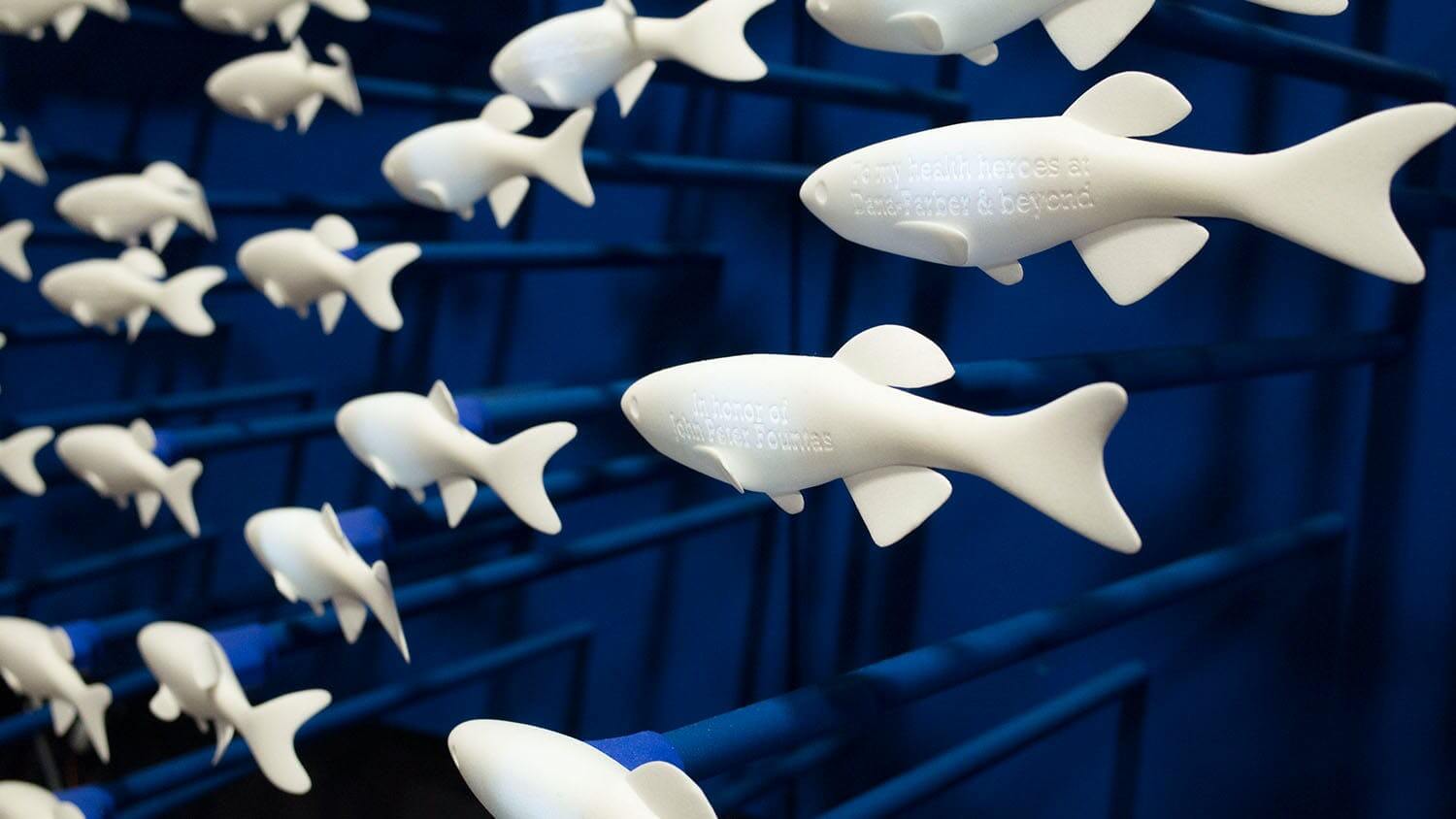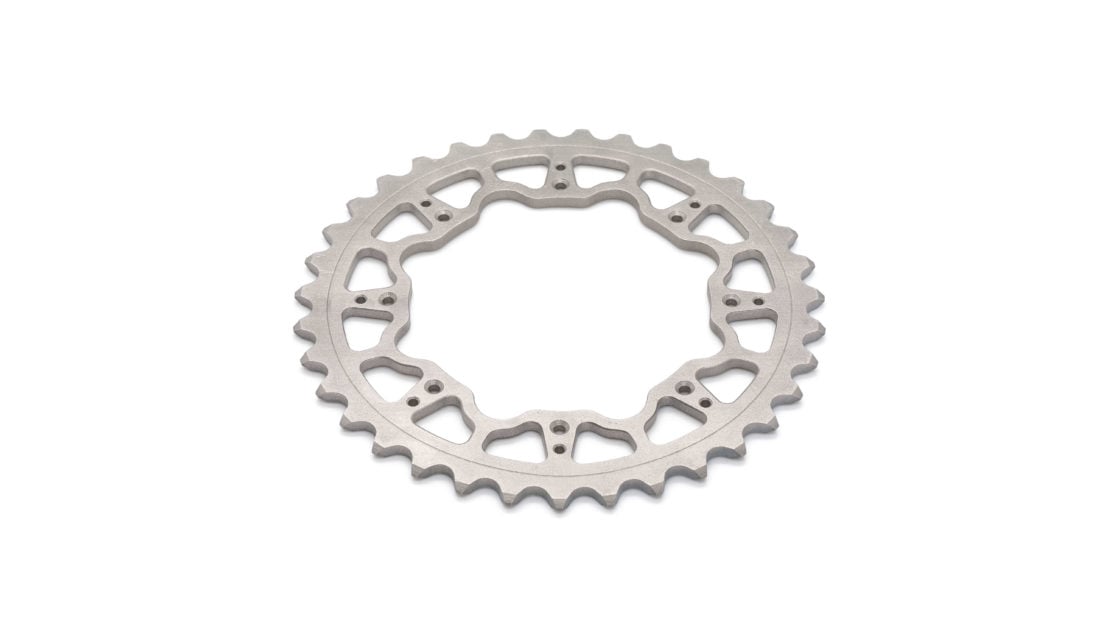
Quality 3D printed parts are born from strong designs–and strong planning processes too. From the concept phase to reaching the point of product delivery and customer fulfillment, industrial 3D printing is versatile and allows for the manufacturing of complex geometries like never before; however, 3D printing optimization involves numerous steps, with a variety of factors playing into the process of bringing a 3D model into physical form whether for critical applications like medical, robotics, or aerospace and drone technology.
Proper 3D Printing Orientation for Maximized Design
During the 3D modeling process, success depends on making good choices, from building in the necessary features and functionality to focusing on the basics like 3D printing material properties and 3D print orientation strength. During the design phase, settings should be well-coordinated for each model.
Orientation designates how a 3D model will rotate within the build space, and is related to accuracy and surface quality as well as offering stability and good bed adhesion. Supporting successful printability, good 3D printing orientation must be considered further for technology like Stereolithography with resin-based materials or Material Jetting with full-color material that require support structures. Any other types of post-processing requirements should be factored in from the beginning for quality and strength in 3D printed parts.
Customization options are available for certain 3D printing materials, depending on project needs, but in the case of more complex parts and orientation, the User Applications team at Shapeways works with customers who may have special requests or other concerns like heat-resistant 3D printing material and compatibility with certain technologies.
For materials like Nylon 12 [Versatile Plastic] and Fine Detail Plastic, it is also possible for customers with more advanced knowledge to set the orientation with the ‘Set 3D Printing Orientation’ tool, using the following steps:
- Visit this page and click the three vertical dots to the right of the model.
- Select ‘Open in 3D Tools.’
- On the following page, click on the ‘Set 3D Printed Orientation’ button.
- A popup window will appear, displaying a navigational button in the bottom left corner. Use this to set the orientation, and then click ‘Save Orientation’ when done.

Compatible Materials Are a Must for Strong 3D Printed Parts
Materials have a tremendous impact on part strength and 3D printing optimization. Each 3D printing material possesses a unique set of properties, to include:
- Yield strength – the amount of stress a material can withstand before permanently deforming.
- Toughness – how much energy a material can absorb without breaking.
- Ductility – how far an object can deform without breaking.
- Brittleness – the opposite of ductility, with brittle objects fracturing easily.
- Stiffness – measuring the rigidity of a material, as materials with high stiffness are very good at keeping their shape even under load, and stiff materials are usually used in load-bearing applications.
- Hardness – measuring 3D printing material hardness, and resistance to scratching and surface indentation.
- Resistance – comparing resistance to a variety of thermal and environmental factors, to include temperature, moisture, chemicals, and more.
Designers can save a lot of time by making sure that 3D models aren’t stretching the limits of a certain material when creating an ornate piece in metal, for example. For designs that may require durability as well as added flexibility for thinner structures, many Shapeways customers choose 3D printing materials like Nylon 12 [Versatile Plastic] with Selective Laser Sintering (SLS).
As an added benefit, SLS 3D printing does not require support structures–affording designers much greater design freedom as well as saving time in post-processing without the need to remove the additional material. As with other powder-based technologies, this advantage eliminates the possibility of weakening a perfectly good 3D print in post-processing, as well as eliminating any need for sanding afterward to remove marks left by supports. For many other 3D models, however, such as those manufactured with Stereolithography, support structures must figure into the design process.
Parts 3D printed in metal are by far the strongest, and Shapeways offers a wide variety of choices to include Steel, Aluminum, and numerous options for precious metals via Wax Casting, to include Platinum, Gold, Sterling Silver, and more. Aluminum is popular for 3D printing metal parts strength, offering an impressively high strength-to-weight ratio. This metal 3D printing material is suitable for parts that must be tough yet lightweight, like industrial 3D printed drone frames.

Weighing Out 3D Printing vs. Traditional Manufacturing Comparisons
Strength and durability usually play a huge role in creating successful parts, leading customers to explore whether additive or traditional may be better; however, there may be other issues to consider too such as precision in parts, surface quality, and even more importantly–whether the project requires low-batch production or mass production of parts. For customers who are still engaged in the product development stage, 3D printing offers tremendous advantage with the opportunity to rapid prototype, creating as many iterations as necessary quickly and economically.
For most businesses, the manufacturing goal is centered around how to strengthen 3D printed parts, while also considering needs in customization and volume. If customer demand has increased exponentially though, it could make greater economic sense—as well as increasing speed and efficiency—to scale up to mass production, using traditional methods like Injection Molding for large volumes of identical parts.
The focus at Shapeways centers around customer’s needs, especially in matching suitable materials and technology to a specific application.

Working with the Shapeways User Application Team
Once the designer uploads a 3D model, an instant quote is generated and the file analysis process is activated–alerting the customer to any printability obstacles. And while the User Application Team can regenerate a number of 3D models that may not have originally been printable, many errors occur due to problems with principal elements in optimizing 3D designs like orientation, as well as geometries that are weak overall, problems with walls that are not thick enough, internal corners that too sharp, warping issues, and other details.
3D printed parts can be extremely strong, supporting heavy loads, absorbing tremendous impacts, and resisting deformation even in challenging conditions. The key is to select the right material, understand the basics of material science, and follow design guidelines.
About Shapeways
Enjoy the benefits of this advanced technology and a wide range of materials from Shapeways for 3D printing your creations with accuracy, complex detail, and no minimum or limits in terms of mass customization or single part orders. Shapeways has worked with over 1 million customers in 160 countries to 3D print over 21 million parts! Read about case studies, find out more about Shapeways additive manufacturing solutions, and get instant quotes here.


